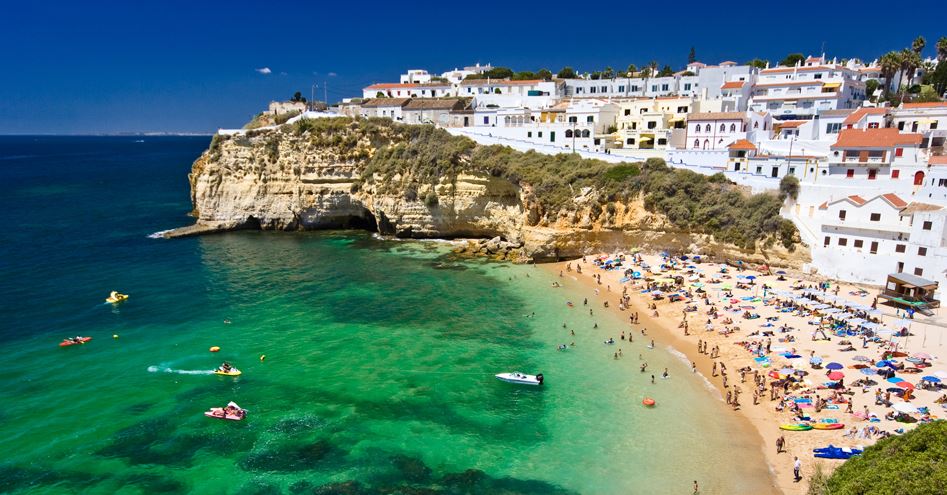According to the Global Peace Index ranking "Top 5 Most Peaceful Countries In The World" are:-
No. 1 is Iceland:-
Capital :-Reykjavik
Official Language :-Icelandic
Population :-348,580
Area :-103,000 km2
For the tenth year running Iceland is the most peaceful country in the world, according to the Institute for Economics and Peace, a global think tank. The index ranks 163 independent states and territories according to their level of peacefulness using 23 different qualitative and quantitative indicators.
Iceland scores a 1 out of 5 on militarization (Iceland does not have a military, and even the police is unarmed), 1.2 out of 4 on Society and Security and 1 out of 5 on Domestic and International Conflict.
No. 2 is New Zealand:-

Capital :-Wellington
Official Language :-English
Population :-4,859,070
Area :-268,021 km2
New Zealand is a developed country and ranks highly in international comparisons of national performance, such as quality of life, health, education, and economic freedom. The country underwent major economic changes during the 1980s, which transformed it from a protectionist to a liberalised free-trade economy. The service sector dominates the national economy, followed by the industrial sector, and agriculture. International tourism is a significant source of revenue.
New Zealand's armed forces—the Defence Force—comprise the New Zealand Army, the Royal New Zealand Air Force and the Royal New Zealand Navy.New Zealand'snational defence needs are modest, since a direct attack is unlikely. However, its military has had a global presence. The country fought in both world wars, with notable campaigns in Gallipoli, Crete, El Alamein and Cassino.The Gallipoli campaign played an important part in fostering New Zealand's national identity and strengthened the ANZAC tradition it shares with Australia.
No. 3 is Austria:-

Capital :-Vienna
Official Language :-Hungarian
Population :-8,823,054
Area :-83,879 km2
With offices in Sydney and New York, the IEP was established in 2009 to conduct research on peace and security world-wide. It has developed a methodology that ranks countries globally on how peaceful they are, based on 22 separate indicators.
Most people understand the absence of violence as an indicator of peace. This definition also allows for the measuring of peacefulness within, as well as between, nations. The GPI ranks independent countries by their ‘absence of violence’ using metrics that combine both internal and external factors.
No. 4 is Portugal:-

Capital :-Lisbon
Official Language :-Portuguese
Population :-10,291,027
Area :-92,212 km2
Portugal continues to be among the most peaceful countries in the world. The Global Peace Index 2018, published on Wednesday, has again found thatPortugal is one of the most peaceful countries in the world. The index also revealed that Iceland remains the most peaceful, a position it has held since 2008.
No. 5 is Kingdom Of Denmark:-

Capital :- CopenhagenOfficial Language :- DanishPopulation :- 5,785,864Area :-42,933 km2
The unified kingdom of Denmark emerged in the 10th century as a proficient seafaring nation in the struggle for control of the Baltic Sea. Denmark, Sweden and Norway were ruled together as one realm under the Kalmar Union, established in 1397 and ending with Swedish secession in 1523. The areas of Denmark and Norway remained under the same monarch until 1814, often referred to as the Dano-Norwegian Realm, or simply Denmark-Norway. After the Napoleonic Wars, Norway was ceded to Sweden, while Denmark kept the Faroe Islands, Greenland and Iceland. Beginning in the 17th century, there were several devastating wars with the Swedish Empire, ending with large cessions of territory to Sweden. In the 19th century there was a surge of nationalist movements, which were defeated in the 1864 Second Schleswig War. Denmark remained neutral during World War I. In April 1940, a German invasion saw brief military skirmishes while the Danish resistance movement was active from 1943 until the German surrender in May 1945. An industrialised exporter of agricultural produce in the second half of the 19th century, Denmark introduced social and labour-market reforms in the early 20th century that created the basis for the present welfare state model with a highly developed mixed economy.





No comments:
Post a Comment